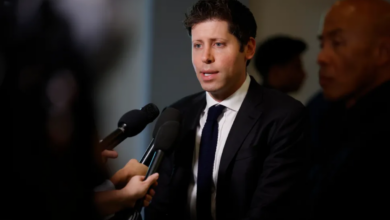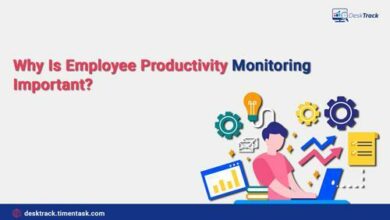7 tips for forex traders

Foreign exchange trading is a fast-paced industry where large sums can be made or lost quickly. Traders need fundamental principles to manage the complex financial world. This comprehensive study examines seven key tips that can make or break FX traders. A successful forex trading career requires setting clear goals, choosing a trading style that suits one’s personality, understanding risk-reward ratios, and using stop-loss orders. The following seven tips help traders achieve financial goals in the dynamic forex market, whether they are experienced traders looking to improve or novices looking to build a solid foundation.
1: Define Goals and Know about What is Forex Trading Style
Forex trading success requires clear goals and a suitable trading strategy. For traders seeking long-term profitability, these phases provide advice, flexibility, and risk mitigation. Setting clear goals is crucial in the forex market. Trading goals guide decision-making and give direction and meaning. Whether your goal is short-term profit, long-term wealth development, or risk reduction, clear goals help you focus and stay disciplined. They also help evaluate success and improve strategy.
What is forex trading style that traders should understand for trading? Trading tactics like day, swing, and position trading have pros and cons. Day traders may be good at making quick decisions. However, patient people may prefer position trading. The right personality and trading style can improve confidence and comfort. This alignment might help traders stick to their strategy despite market changes and uncertainty.
All trading styles have different risk profiles. Day trading has a higher trade frequency and lower profit margins, making it more volatile. Position traders, on the other hand, hold their holdings for weeks or months, minimizing market fluctuations. However, this technique may expose their finances to longer-term risks. These risk profiles must be identified for successful risk management. This tool helps with position sizing, leverage control, and tailored stop-loss orders for one’s trading style.
Setting defined goals provides guidance and drive, and choosing a trading style that fits one’s personality improves comfort and discipline. Understanding the risk profiles associated with different trading methods helps traders make informed decisions and manage risk. Combining these elements provides a solid foundation for currency market success.
The Broker and Trading Platform
Forex traders must choose a trustworthy broker. Your broker provides your link to global currency markets; thus, trust and integrity are important. Look for well-regulated, reliable brokers. The CFTC in the US and the FCA in the UK indicate a broker’s transparency and client safety. Execution and fund withdrawal errors can ruin your trading experience, so make sure your broker is honest.
Broker research and comparison are crucial to decision-making. Brokers vary in fees, spreads, and currency pairs. Take time to analyze these aspects to pick a broker that fits your trading goals. Reading user evaluations and asking experienced traders for advice can also reveal a broker’s performance and reputation.
Your broker’s trading platform is your main market analysis and trading tool. The platform must meet your needs and preferences. If you use technical analysis, be sure the platform has good charts. If you like automated trading, check expert advisor compatibility. Make sure the platform’s UI is easy to use to expedite your trading. Your broker’s trading platform should support your goals and help you execute deals efficiently. Successful and rewarding forex trading requires making the proper choices in these areas.
3: Consistent Methodology?
When it comes to understanding ‘what is forex,’ maintaining a consistent trading methodology is a pivotal factor for success. Trading in the foreign currency market requires traders to follow certain standards. Impulsive and emotional trading must be reduced with structured methods. Consistency is essential for measuring a plan’s long-term effectiveness and identifying opportunities for improvement.
Forex traders often pick between fundamental and technical analysis when judging financial markets. Fundamental analysis examines economic data, news, and geopolitics, while technical analysis analyzes chart patterns and mathematical indicators. Trading tactics and preferences influence these methods. Some traders use both tactics to understand the market fully. Consistent decision-making is crucial, regardless of approach.
Being consistent and adaptable are equally vital. The foreign currency market is volatile and vulnerable; thus, a flexible strategy is needed. Traders can capitalize on new possibilities and control risks with a flexible approach. Successful foreign exchange traders strike a balance between consistency and adaptability, enabling them to comfortably traverse the volatile currency markets.
4: Determine Entry and Exit Points
Entry and exit points must be determined for forex trading success. This requires coordinating entry and exit times with a trading plan. Consistent trading decisions across timeframes and indicators are crucial. This strategy lowers ambiguity and contradicting signals, making trading decisions easier.
Market analysis using different periods can produce contradicting results. A daily chart that suggests buying an asset may indicate selling on an intraday chart. Synchronize your analysis across several temporal intervals to reduce these discrepancies. Use a weekly chart to determine trade direction. Be cautious and wait for daily chart confirmation before trading. Synchronization keeps your trading approach coherent, reducing the chance of contradictory decisions.
One can improve trading accuracy and reduce errors by synchronizing entry and exit points and avoiding contradicting data. Successful forex trading requires harmony in one’s trading style.
5: Calculate Your Expectancy
Expectancy is crucial to forex trading success. The statement is a mathematical expression used to evaluate a trading method’s reliability and efficacy. Calculating expectations gives traders valuable insights into their trading strategies’ performance.
To determine anticipation, analyze one’s trading history, focusing on past trades. Quantify the results of each deal, distinguishing between successful and failed deals. After gathering the data, compare the profits of successful transactions to the losses of unsuccessful trades. This process helps traders decide if their strategy is profitable or losing money.
Predicting a trading system’s performance is crucial since it provides an impartial assessment of its effectiveness. This helps determine if a trading strategy is lucrative or needs to be changed. By continuously computing expectations, forex traders can enhance their approach, profitability, and success.
Expectancy is a key indicator of trading system performance. This program analyzes past trades to quantify strategy efficacy. Thus, it aids in making educated decisions about whether the stated technique is suitable for achieving financial goals in the currency market.
6: Risk: Reward Ratio
In forex trading, understanding the risk-reward ratio helps traders make informed decisions and manage market volatility. This concept focuses on risk tolerance and assessing potential rewards versus risks. Understanding one’s risk tolerance is crucial. This requires knowing one’s risk tolerance for each trade. Financial situation, trading goals, and emotional disposition affect risk tolerance. By knowing their risk tolerance, traders may coordinate their strategy and avoid market overexposure.
Also important is weighing the potential advantages against the hazards. When the possible loss for each trade is $200 and the profit per trade is $600, the risk-reward ratio is 1:3. The ratio suggests a three-dollar reward for the dollar risked.
Let’s consider an example: The trader makes ten deals, four of which earn $600—multiplying $600 by 4 yields $2,400 in cumulative profit. However, six of the ten deals lost money. Losses of $200 each add up to $1,200 ($200 times 6). Profitability was achieved despite just 40% correct outcomes due to the excellent risk-reward ratio.
By understanding the risk-reward ratio and its use in trading, one may effectively manage risk and make decisions that support their trading goals. A successful foreign currency trader must balance conscious risk-taking and potentially profitable returns.
7: Stop-Loss Orders
Foreign currency trading risk management relies heavily on stop-loss orders. All traders must learn risk management to protect their investments. A stop-loss order automatically closes a contract at a predefined exchange rate to reduce the risk of large losses.
Say a trader starts a trade without a stop-loss order. Every negative price fluctuation might cause huge financial losses due to market volatility. Unregulated losses can quickly deplete a trader’s money, making recovery difficult. Without a stated exit plan, traders may feel emotional and hold a losing position in hopes of a market reversal, exposing themselves to risk.
When using a stop-loss order, a trader sets a price threshold at which the trade is automatically stopped. When a trader starts a transaction at $1.2500 and places a stop-loss order at $1.2450, they limit their loss to $50 per contract. The exit plan protects against losses above the threshold.
The example shows how stop-loss orders protect traders. Despite market fluctuations, stop-loss orders restrict trader losses. It protects against foreign exchange market price volatility.
Stop-loss orders help traders manage risk and control their investments. Safety systems prevent large losses and promote good trading behavior. Stop-loss orders are essential to forex trading success, so traders must prioritize their use.
Bottom Line
Conclusively, when delving into the intricacies of forex trading, it’s imperative to understand ‘what is forex’ and the complexities it entails. This financial endeavor demands careful planning, strategic thinking, and effective risk management. Regardless of your level of experience, these seven tips are your guide to success. By setting well-defined goals, adopting a proper trading approach, grasping risk-reward ratios, and implementing stop-loss orders, you’ll be equipped to navigate the forex market with unwavering confidence and disciplined precision. With these invaluable insights, you’re well on your way to achieving your financial goals and mastering the world of foreign exchange trading.












